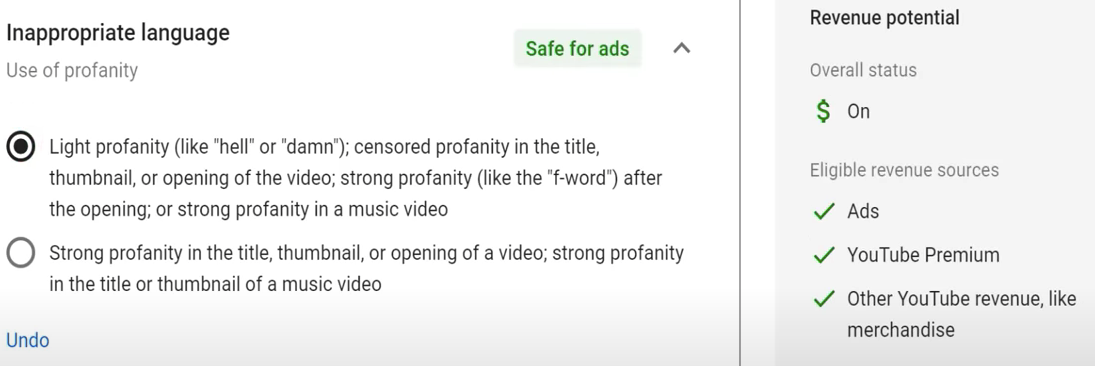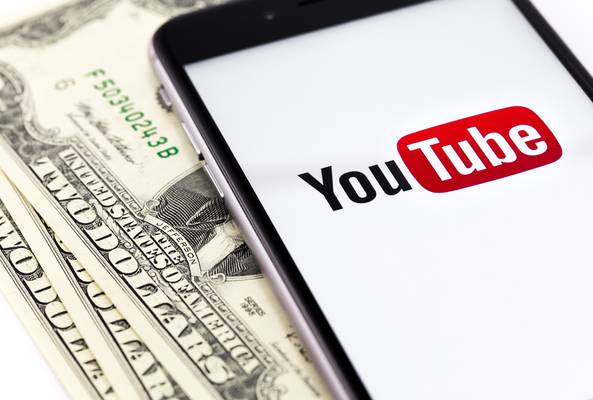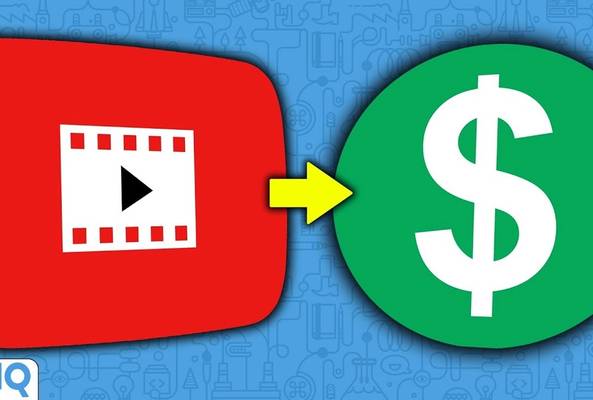Carla Marshall has 10+ years of experience in video marketing, social media management, content marketing, DRM, and SEO. She was previously Editor in Chief at ReelSEO.com, and as a journalist and video marketer, she's covered news stories, creator journeys, and digital-first publishing initiatives across all the major online video platforms. She is YouTube Certified and a judge for the Shorty Awards, as well as the UK, US, Canadian, Global, and EU Search Awards.
How to Monetize Your YouTube Videos (and Keep Them Monetized!)
So you've monetized your YouTube channel and now you think that feature should apply to every single video you publish. You don't have to convince us, but you do have to convince YouTube.
The next time you upload a video you may find yourself encountering a new screen as part of the upload workflow. This new step gives you the chance to “self-certify” your content before it goes live. If you are part of the YouTube Partner Program step two will always ask you whether or not you want to monetize the video. If you say yes and save, a new third step will appear labeled ‘Ad Suitability’.

On this screen, you will be quizzed about whether or not the video contains certain content that might make the video not suitable for all advertisers. You can click on each box and answer the questions contained within. And as you do so the revenue potential box to the right will show you how this might affect the revenue on the video. In some cases, you will get the all-clear, indicated by a green dollar icon.

While in other cases your video may only be eligible for limited ads as indicated by a yellow dollar icon. Just to be clear, this doesn't mean that your content is inappropriate for YouTube and that you will get community guideline strikes. But it may be inappropriate for certain advertisers who want to target particular audiences.
There are 8 categories to work through including adult content, violence, drug-related content, sensitive issues and more. If you are 100% confident your content doesn't come close to any of these issues, you can simply check the none of the above box at the bottom of the screen, and move on.
YouTube: Self-Certifying Your Content for Monetization
Why is YouTube now giving creators the ability to self-certify their content? The answer is because YouTube wants to place the burden of responsibility on you, rather than itself, for the content on the platform.
Now this has both its positives and negatives. So let's take a look at both.
It is well known that YouTube uses lots of machine learning and artificial intelligence to automatically review content, but that isn’t always foolproof. So it stands to reason that if you are truthful with your self-certification - and this is confirmed through an automated review - YouTube will start to trust you more. That means it's less likely that your future content will be hit by inappropriate misleading ad warnings when you don't deserve them.
This may also mean that if you have been on YouTube for years, without any issues, you may not see this screen very often, or even have to go through this process.
On the flip side if you're brand new to the YouTube partner program you may have to confirm this screen with every single video you upload. We'll have to see what happens over the next couple of months. Ultimately for all those creators who are doing the right things, this should add an extra layer of comfort.
YouTube Partner Program: Don’t Upload Inappropriate Content!
Now if YouTube decides that your content is doing something wrong, then they're washing their hands of it and saying, "we asked you to fill out this form, you didn't fill it out properly, it's your own fault".
YouTube also says that if you continually misrepresent your content they will review your participation in the YouTube partner program.
In a sense, YouTube is gathering evidence. Like they do with the ‘Made for kids’ question - you have to answer regarding COPPA and the FTC.
So with all of this in mind, here are a couple of tips to follow:
- First, and obviously, be honest. If you try and cheat the system, or dodge the questions now, it's going to come back to bite you later.
- Secondly, if you're not sure if your video falls into any of these categories, you can play it safe. Set one of the categories, unlist the video and then request a manual review so that human reviewers can check on the video.
Over the past year, YouTube has been experimenting with running adverts against edgier content. That's because in part if YouTube knows the nature of the content, advertisers can target those particular videos with the right target audience.
YouTube has a dedicated support page on advertiser-friendly guidelines that does include broad examples, so that's definitely worth checking out. You can read it here.
If you would like to learn more about monetizing your YouTube channel then make sure to check out this vidIQ YouTube playlist on the topic.
Want To Get More Views on YouTube?
If you want to take your YouTube channel to the next level and get more views on YouTube then make sure to download vidIQ. Join over 1 million other users and use vidIQ to help you research YouTube, analyze videos, audit your own channel, and take actionable steps click here to install now!
And if you’re really serious about growing your YouTube views and subscribers, sign up for exclusive access to the vidIQ Academy and learn how to launch a successful YouTube Channel in just 30 days.



